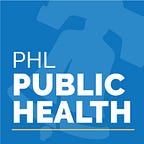Paralysis among Victims of Gun Violence in Philadelphia
Most victims of gun violence ultimately survive. In 2018, there were 1,403 shootings and 351 homicides in Philadelphia. For each gun homicide, there were four survivors who sustained gun injuries.(1) These injuries can cause significant long-term health effects, including paralysis.
All types of paralysis can be debilitating, significantly compromising the quality of life, and putting victims at risk for additional complications, including severe psychological trauma, recurrent infections, bowel and bladder dysfunction, chronic pain, and frequent hospitalizations. This issue of CHART focuses on paralysis among victims of gun violence in 2016–2017.
Nearly 1 in 7 Victims of Gun Violence Experience Paralysis
- In 2016–2017, 1,132 individuals in Philadelphia were hospitalized due to a gun injury, and 156 (about 14%) of these victims experienced some type of paralysis due to their gun injury. Partial paralysis means either one limb, one side of the body, or the lower body, and complete paralysis means all four limbs.
Half of Paralysis Victims are Black Males Under Age 35
- Patterns of gun-related paralysis mirrored patterns of overall gun shootings: the majority of victims (74%) were black, non-Hispanic males.
- Over half of those who were paralyzed due to gun injury were less than 35 years of age. Being paralyzed at a young age, these victims may experience decades of life with severe disabilities.
Treating Gun Violence-related Paralysis is Costly
- In 2016–2017, the total cost of gun-related paralysis was $41.3 million, and Medicaid was the primary payer for $32.4 million (or over 75%) of these costs.(4)
- The average length of stay for victims with any gun-related paralysis hospitalizations, including but not limited to their initial hospitalization, was 11.9 days and ranged from one day to 101 days. These stays represented an average $180,481 in hospital charges per visit.(5)
- These initial hospital costs represent only a small fraction of the total cost of care, which includes costs of post-hospital discharge medical care and potential re-hospitalization.(6)
- Over half of shooting victims had at least one re-hospitalization related to paralysis complications, with an average of five additional hospitalizations in the two years after the shooting.
Managing Gun-Related Paralysis Often Requires Long-term Specialized Care
- More than 60% of patients were discharged from the hospital needing assisted living or specialized nursing care.
What Can Be Done
The Health Department is:
- Coordinating with city agencies and stakeholders to build a public health approach to violence prevention, including the development of an injury prevention program within the Department of Public Health.
- Connecting high risk youth to educational and job opportunities and community resources.
- Partnering with law enforcement to support the efforts of Operation Pinpoint and to identify trends in violence that are amenable to prevention.
- Engaging community members in a community-informed approach to violence reduction.
- Partnering with multiple agencies to address the flow of firearms into Philadelphia neighborhoods, to advocate for safe storage, and address environmental factors that make neighborhoods unsafe.
Health care providers should:
- Encourage safe storage by advising that guns be stored locked, unloaded, and separately from ammunition.
- Counsel patients about the risks of gun ownership and discuss gun safety at health care visits.
- Refer patients with disabilities to additional services.
- Refer patients who have survived firearm injuries to appropriate violence intervention services, including hospital based violence intervention programs for both children and adults.
- Help victims and families who are exposed to the trauma of gun violence to access the necessary support.
Policy makers can:
- Support the development and expansion of programs that identify and assist individuals at risk of gun violence.
- Advocate for legislation to reduce the flow of guns into the hands of those likely to shoot others and allow localities to protect their residents from gun violence (i.e., repeal state preemption).
- Mandate that guns be safely stored.
- Reduce illegal guns on the street by requiring reporting of lost and stolen firearms.
- Reduce guns in public spaces to promote public safety.
People can:
- Avoid carrying guns.
- Reduce the risk of suicide, homicide, and accidental death by avoiding storing guns in the home.
- Make sure any guns are stored locked, unloaded, and separately from ammunition.
- Ask about guns in the places where your children play.
- Promptly report any lost or stolen guns.
- Never buy a gun for another person.
Technical Notes
- Not all individuals with gun injuries are hospitalized, so these numbers do not capture all victims of gun violence.
- “Unknown” category indicates that hospital did not submit race/ethnicity codes for an individual.
- Total charges are defined as the amount a hospital billed for services. These are typically overestimates of what the hospital was actually paid (e.g., payment from insurance companies or individuals) or their costs to deliver services.
- Hospital visits where Medicaid was the secondary or tertiary payer were excluded from these costs.
- Individuals with length of stay less than 1 day were not included in cost estimates, as they were likely not admitted to the hospital, were treated and released, or died prior to an overnight admission.
- Some patients do not have unique identifiers, so they are excluded from the re-hospitalization rate.
Suggested citation: Philadelphia Department of Public Health. Paralysis among Victims of Gun Violence in Philadelphia. CHART 2020;5(3):1–6.
CHART is a publication of the Philadelphia Department of Public Health, and is intended to highlight under-reported or under-appreciated public health issues in an effort to kick-start a conversation. Readers can subscribe to CHART on Medium, or on our website.
